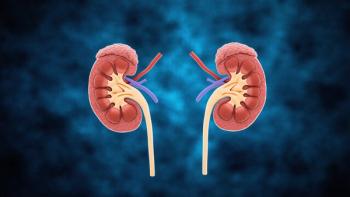
Dual-Eligible Dialysis Center Patients Are Less Likely To Recover Full Kidney Function After Acute Kidney Injury, Research Shows
Dual eligibility was a proxy for high social risk in a retrospective study that compared outcomes in that group with individuals with other types of health insurance coverage.
Medicare beneficiaries who also receive Medicaid — known as dual eligibles — make up one-sixth of the traditional Medicare population and one-seventh of those on Medicaid but roughly a third of spending for both, according to KFF (formerly known as the Kaiser Family Foundation).
KFF’s profile of the group determined that besides low income and limited savings, the dual eligible population differed from traditional Medicare beneficiaries in several ways: Far more (13%) lived in long-term care facilities compared with Medicare patients who weren’t on Medicaid (1%). Over four times more were under 65 and qualified for Medicare because of a long-term disability (37% vs. 8%). And more than half (51%) were people of color compared to a fifth (20%) of traditional Medicare beneficiaries.
There also were big differences in health measures: Many more dual eligibles were in fair or poor health (44% vs. 17% of Medicare beneficiaries without Medicaid). More (26% vs. 15%) had five or more chronic conditions. And just over twice as many dual eligibles (48%) had at least one limitation in activities of daily living, which include eating, bathing, toileting, dressing, and functional mobility, compared with Medicare beneficiaries without Medicaid coverage (23%).
For researchers, dual eligibility is an indicator of high social risk — indeed, a 2022 study found that it is associated with worse dialysis outcomes among patients on maintenance hemodialysis.
But there’s been no published research on how social risk factors influence outcomes among the 10% or more of new dialysis patients receiving treatment at outpatient dialysis centers for acute kidney injury, according to a
To find out, corresponding author
In short, they found that dual eligible patients, on average, had significantly worse outcomes when measured as time to kidney function recovery, which they defined as “dialysis independence” up to six months after beginning dialysis.
The study included 2,544 adult patients who initiated dialysis at 238 dialysis facilities from 2017 to 2021. Researchers divided them into groups according to type of insurance: traditional Medicare, Medicare Advantage and Veterans Affairs — the reference group, comprising 47% of participants – vs. commercial coverage (25%), dual eligible (16%), and Medicaid-only (12%).
Degree of social risk was based on a census tract-level modified area deprivation index, with the top 15% considered most deprived. Scores from census tract-level rural-urban commuting area were used to divide participants by primary residence: urban (42%) vs. rural (58%).
The authors created three models that adjusted for more or fewer additional variables, which included age (average: 65), sex (58% male), and comorbidity (based on multiple medical conditions, most of them related to kidney function).
Over the study’s five years, 37% of patients recovered kidney function, 177 patients (8.2%) died, and five underwent kidney transplantation (0.23%).
Dual-eligible status was significantly associated with a lower likelihood of kidney function recovery compared to the Medicare/Medicare Advantage/VA group (adjusted hazard ratio: 0.77). The Medicaid group also had lower odds of recovery but that finding was not statistically significant. Living in a rural area made no difference.
All three models yielded similar results.
The researchers hypothesized that lower odds of recovering kidney function among dual eligible (and Medicaid) patients were due to both upstream and downstream factors. Upstream: A higher burden of other social risk factors that harm their overall health, including risk of chronic kidney disease, before the acute kidney injury that led to outpatient dialysis. Downstream: They may be more likely to go to dialysis facilities that disproportionately treat dual eligibles with kidney failure because they are located in neighborhoods with lower neighborhood socioeconomic status and may be underfunded due to lower reimbursements for Medicaid and dual eligible patients.
Babroudi and her colleagues recommend that future research explore other patient-level social risk factors and their association with incidence and recovery from acute kidney injury treated by outpatient dialysis, “especially those that may be modifiable (e.g., reliability of transportation).”
Newsletter
Get the latest industry news, event updates, and more from Managed healthcare Executive.






















































